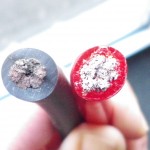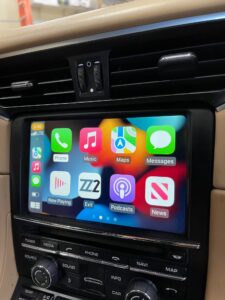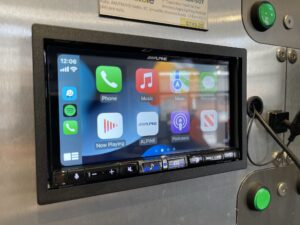Annie
I enjoy helping people. I've been in the business 22 years and hope my knowledge can help others out there. Besides mobile electronics I enjoy doing anything outdoors, composing music, creating art, reading and learning about everything in life that I possibly can!





2 Comments
There are two criteria in hooking up polarity. One is electrical phase, such as demonstrated above. The other is acoustic phase – which is the real-life manner in which speaker work together or against one another in time and space.
At various distances from one another, drivers go in and out of phase with each other at different frequencies. The can be very significant in the car environment. When speakers are in-phase acoustically, they sound better, even if the electrical polarities are the reverse of what a pure wiring diagram might suggest is correct.
Sometimes the difference is obvious, other time one needs a good ear for tuning this way. Listen particularly in crossover range of frequencies, as this is the area affected. Vocal music, particularly female vocalists, can be great for this, as it often covers the crossover range, and we have a good sense of when a voice sounds natural. Also, some test recording tracks testing in and out of phase performance can be very helpful.
I’ve been focused on the home market for years now, but with a new car purchase have been getting re-interested in fine car audio. The last time I went full-out was back when MB Quart was the big name in car speakers in the 1990s. I originally hooked all up in electrically correct phase. I then did listening tests for acoustic phase, and was at first perplexed that phase test recordings were coming out the opposite of what they should. I eventually set aside the real-time analyzer and began flipping polarities. First, I listened just to the right channel, flipping polarity on the tweeter. It made an amazing improvement! The sound no longer seemed to be coming from individual drivers, but from a beautiful, more acoustically singular source. ‘Lobing’, the shape of the dispersion pattern, was now much fuller and more open.
Next I had to address the right and left channel. I flipped the entire polarity of the right channel – both woofer and tweeter. WOW! The imaging snapped right into place! It was incredible.
Thirdly, I noticed the integration of the rear woofers (no tweeter) with the front setup was OK with one side on the rear, but not the other. I improved this problem by going mono on my rears with a crossover to the fronts of 200Hz – 24db/octive. It was low enough in frequency to not effect imaging in a net negative, but instead to fortify the front stage imaging rather than break it down.
All-in-all, a TREMENDOUS improvement! Just a little lesson on the difference between being correct electrically vs. acoustically. I now also test home speakers for tweeter polarity as well.
Thanks for the additional details! In fact some car manufacturers purposely put their stock subwoofers or door speakers out of phase for this same reason. Depending on placement and cabin acoustics, sometimes you are actually better flipping the phase on one speaker or one side.